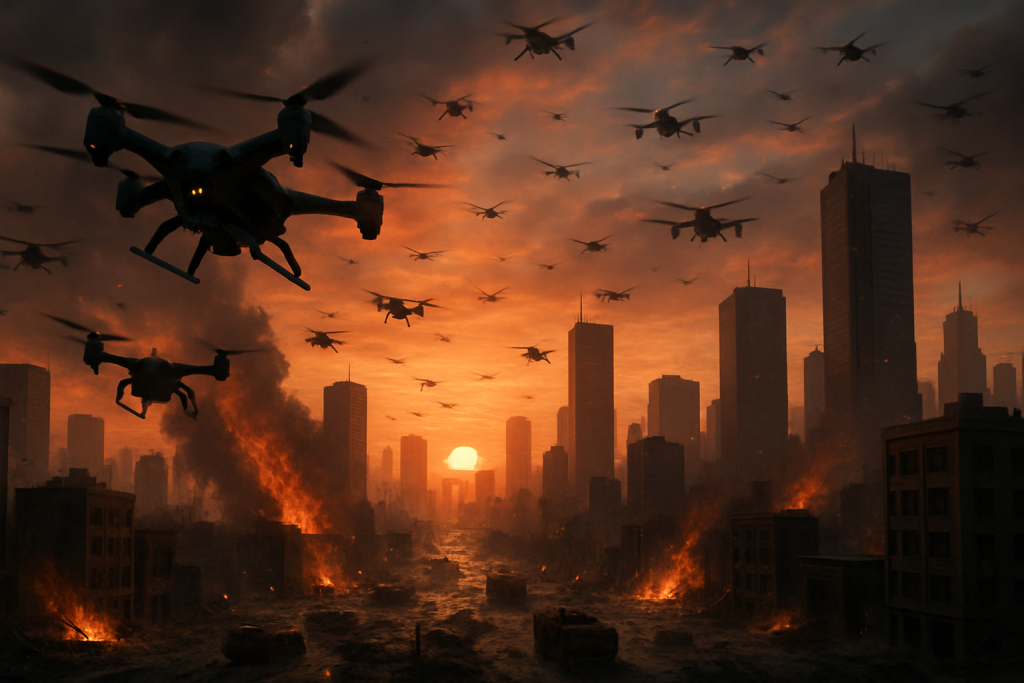The year is 2025. Remember all those think pieces about AI changing the world? Well, it’s happening, and not in the way we all envisioned, sipping lattes while robots write our grocery lists. A recent report in the Financial Times paints a stark picture: the ongoing conflict in Ukraine has become an unprecedented incubator for autonomous weapons, specifically AI-powered drones. It’s less “Jetsons” and more “Terminator,” folks, and the implications are chilling.
Think back to the early days of the war. Drones were already playing a pivotal role, providing crucial reconnaissance and even delivering small payloads. But what started as a David-versus-Goliath story of resourceful Ukrainians using commercially available drones to fight a larger, more technologically advanced enemy has morphed into something far more complex- and frankly, a bit terrifying. The numbers are staggering: nearly two million drones flooding Ukraine in 2024 alone, a full 10,000 of them packing artificial intelligence. That’s a swarm of Skynet-lite buzzing over the battlefield.
These aren’t just your average DJI Phantoms with a paint job. While some are indeed modified consumer models, the conflict has attracted the attention- and the tech- of Western defense companies like Anduril, Shield AI, and Helsing. These firms are pushing the boundaries of what’s possible, turning Ukraine into a real-world testing ground for cutting-edge AI weaponry. It’s like a high-stakes, real-time game of “Call of Duty,” only the stakes are, you know, global security.
So, what exactly does AI bring to the drone party? Imagine a drone that can navigate a dense urban environment, dodging power lines and buildings, all while identifying potential targets with minimal human input. Traditional drones rely on constant communication links, making them vulnerable to electronic warfare. But AI-enabled drones can operate autonomously, making decisions on the fly, even when those links are severed. It’s a level of flexibility and resilience that’s changing the very nature of combat.
However, before you start picturing legions of killer robots hunting down unsuspecting soldiers, let’s pump the brakes a bit. As of now, fully autonomous drones aren’t roaming the battlefield. Human oversight is still considered crucial, a failsafe against both technical glitches and ethical nightmares. Think of it like self-driving cars- we’re not quite ready to let them loose without a human driver ready to take over. But the direction is clear: a move toward semi-autonomous systems, where AI handles the grunt work, and humans make the final calls. Which begs the question: how long before the AI gets *too* good?
This transition isn’t without its hurdles. AI functionality is still resource-intensive, requiring significant processing power and energy. And let’s not forget the data problem. AI thrives on data, and the chaotic, unpredictable nature of the battlefield makes it difficult to gather the kind of clean, reliable data needed to train these systems effectively. It’s like trying to teach a computer to play chess using only a blurry photograph of the board.
The ethical implications are, to put it mildly, enormous. We’re talking about machines making life-or-death decisions, potentially without any human intervention. Who’s accountable when an AI drone makes a mistake? How do we ensure that these weapons adhere to international humanitarian laws? It’s a legal and moral minefield, and the rapid pace of technological advancement is outpacing our ability to navigate it. Experts are screaming for regulation, for clear guidelines on the development and deployment of autonomous weapons. But will anyone listen before it’s too late? It’s a real-life version of the trolley problem, only the trolley is a drone and the stakes are infinitely higher.
The long-term implications for future warfare are profound. Some experts are comparing this shift to the introduction of gunpowder or tanks- a fundamental change in the way wars are fought. Imagine a future where battles are waged not by soldiers on the ground, but by swarms of autonomous drones, controlled by algorithms and AI. It’s a terrifying prospect, one that demands serious discussion and careful consideration. This isn’t just about military strategy; it’s about the very nature of humanity and our relationship with technology. It’s a Pandora’s Box moment, and we need to be damn sure we know what we’re unleashing.
And let’s not forget the financial angle. The companies developing these AI-enabled drones stand to make a killing- literally. The defense industry is already booming, and the demand for autonomous weapons is only going to increase. This creates a powerful incentive for further development, regardless of the ethical concerns. It’s a classic case of technological innovation driven by profit, with potentially catastrophic consequences. As the old saying goes, “War is a racket.” With AI in the mix, it’s a racket on steroids.
In conclusion, the conflict in Ukraine is serving as a catalyst for the rapid development and deployment of AI-enabled military technology, particularly autonomous drones. While these developments offer enhanced operational capabilities, they also present significant ethical, regulatory, and societal challenges that the international community must address. We’re at a crossroads. We can either embrace this technology blindly, or we can take a step back and ask ourselves: are we really ready for a world where machines decide who lives and who dies?
Discover more from Just Buzz
Subscribe to get the latest posts sent to your email.


